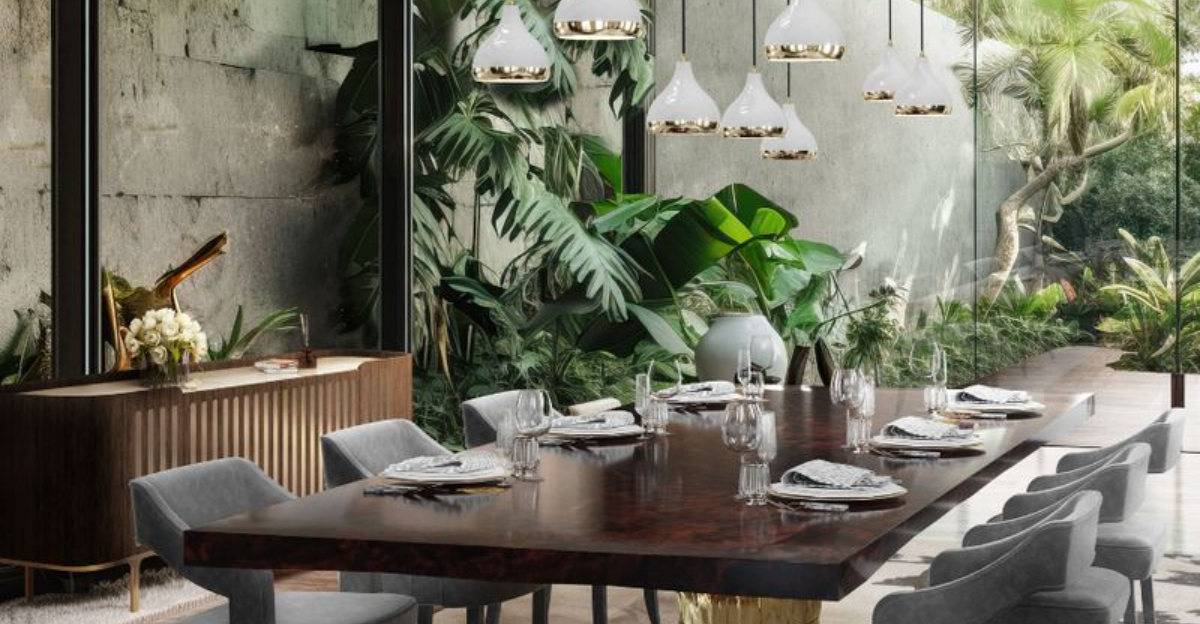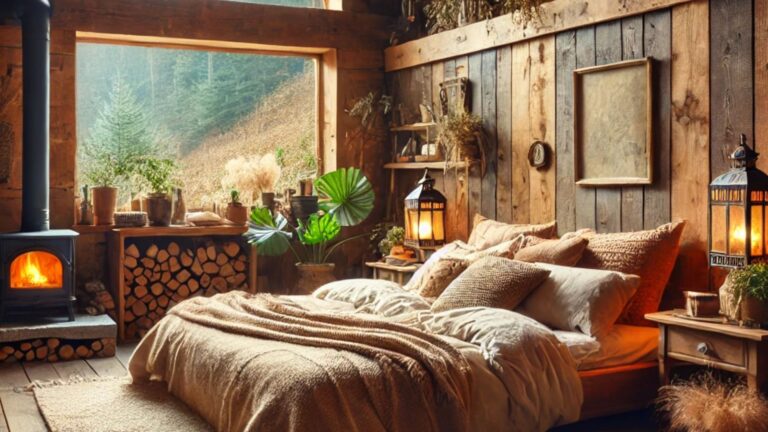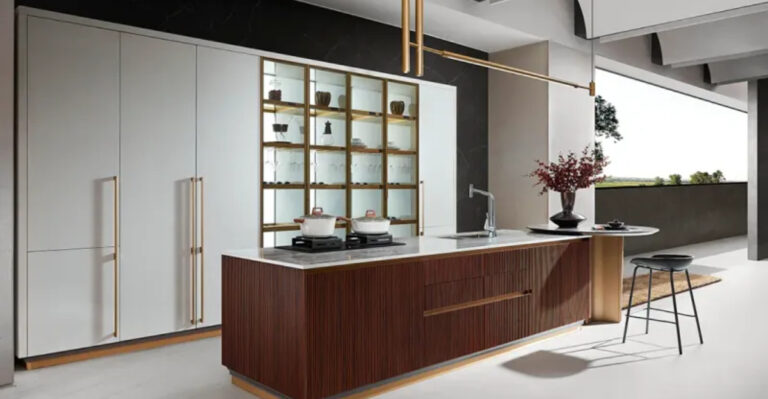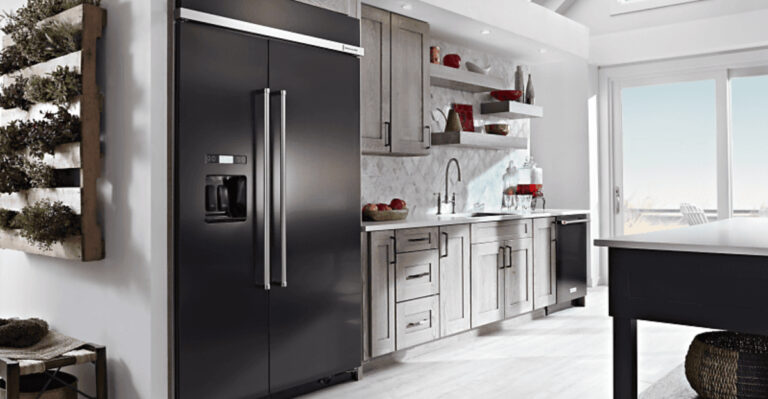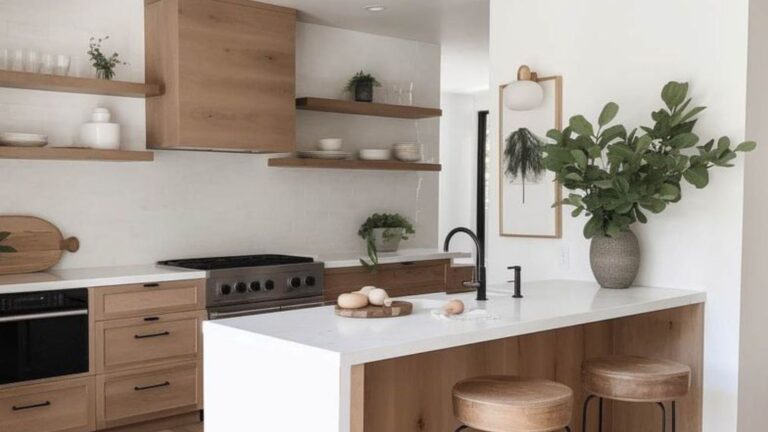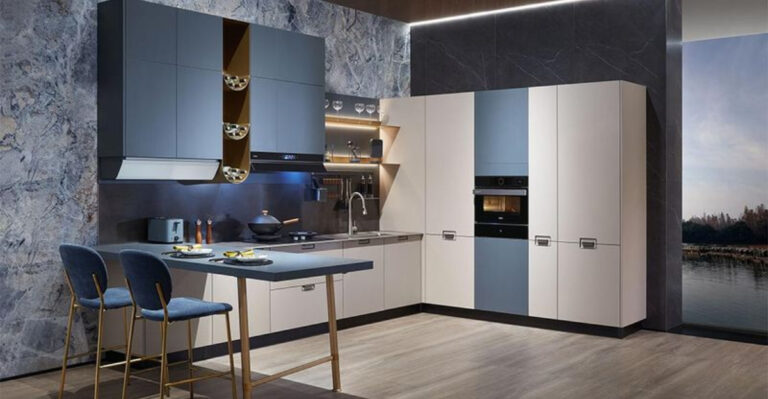The Top 10 Dining Room Trends For 2025 According To Designers (Plus 10 Of The Worst Ones)
Dining rooms are getting a major glow-up as we head into 2025, and honestly, I’m here for it. Designers are blurring the lines between practicality and personality, turning these spaces into true works of art.
Whether you’re redoing your entire room or just swapping out a few key pieces, knowing what’s trending can make all the difference.
I’ve made my share of style missteps in the past, so I love keeping up with what’s fresh, and avoiding what’s falling flat.
1. Mixed Material Tables
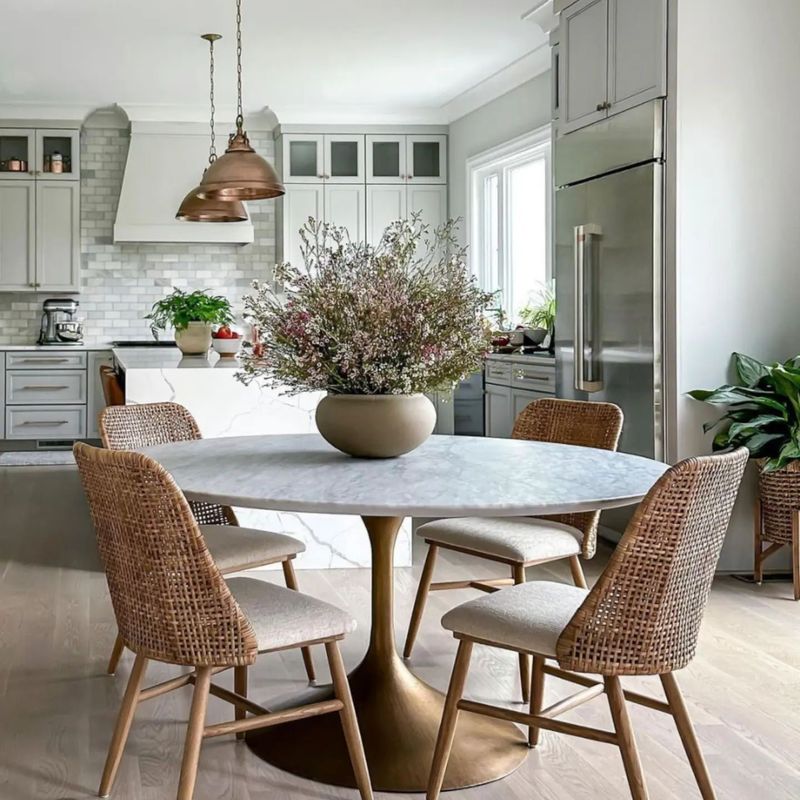
Forget matching everything! Tables combining wood with stone, metal, or glass are stealing the spotlight in 2025. Designers love how these combinations add visual interest without overwhelming the space.
Materials that once seemed incompatible now create stunning focal points when paired thoughtfully. A marble top with wooden legs or brass inlays in walnut surfaces offer texture and dimension.
These tables work wonderfully because they bridge different design styles, making them perfect for homes that aren’t strictly modern or traditional.
2. Living Edge Details
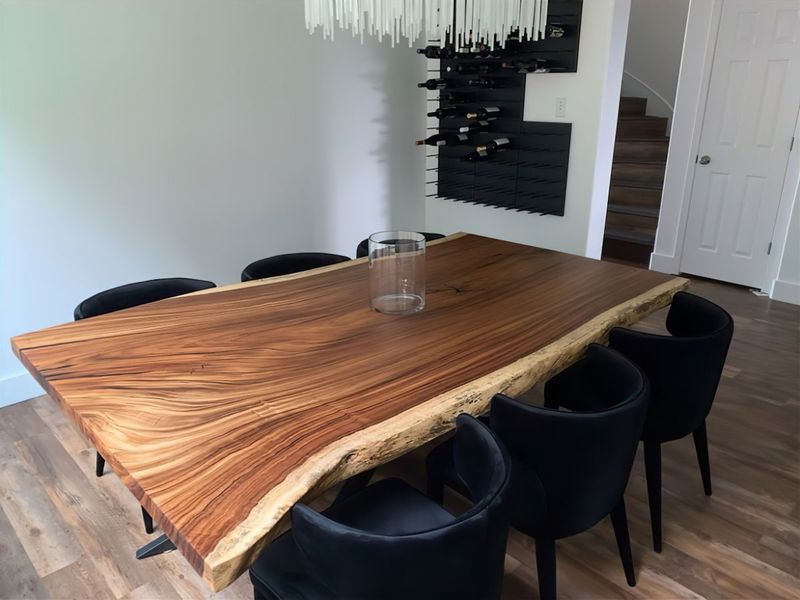
Raw, organic edges are making waves in dining room design, bringing nature’s imperfections indoors in the most beautiful way. Instead of perfectly straight lines, furniture featuring the natural contours of wood creates conversation-worthy focal points.
Imagine a table where you can trace the original shape of the tree with your fingertips! These pieces tell stories that mass-produced furniture simply cannot.
While previously limited to rustic spaces, designers are now incorporating these elements into modern and minimalist dining rooms for unexpected contrast.
3. Sculptural Lighting Installations
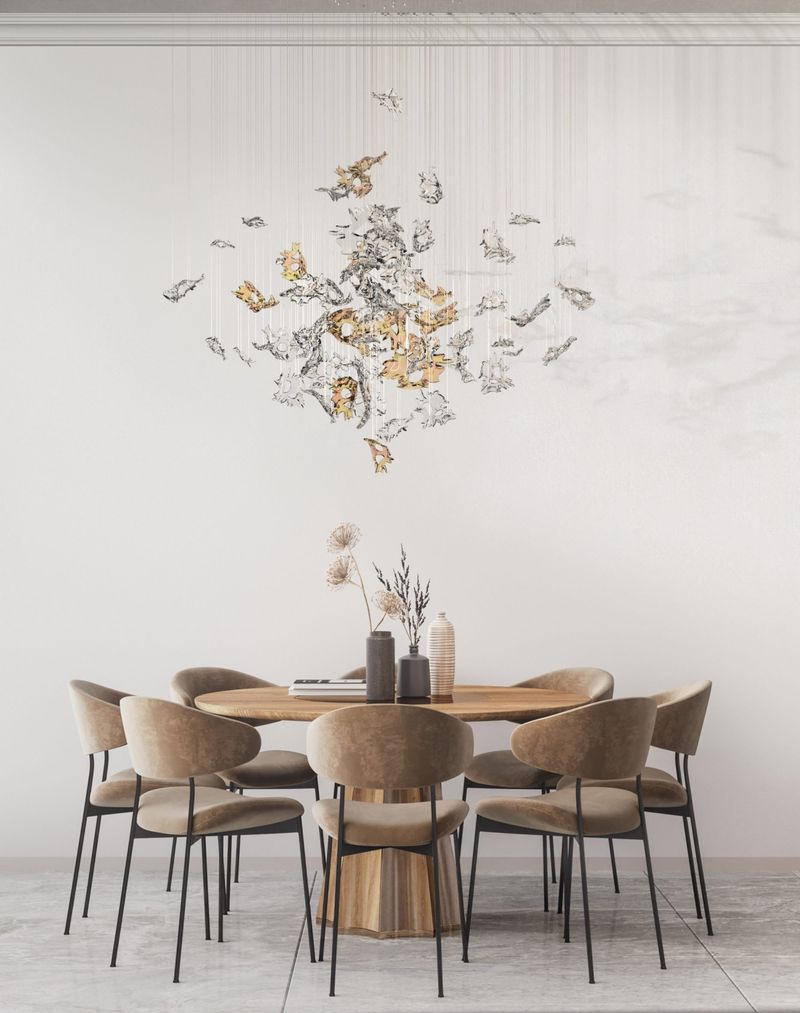
Lighting is having its main character moment! Oversized, artistic fixtures that double as functional sculptures are transforming dining spaces into galleries. Gone are the days when lighting was merely practical.
Designers recommend installations that cascade from ceilings or stretch horizontally above tables, creating dramatic shadows and highlighting textures. Some even incorporate movement or adjustable elements!
Though investment pieces, these statement lights instantly elevate ordinary rooms and often become the element guests comment on most.
4. Bold Color Blocking

Color-shy homeowners, prepare for a shock! Designers are embracing dramatic color combinations that divide dining spaces into visual zones. Think deep blue walls with terracotta accents or emerald green paired with soft pinks.
This approach works magic in open-concept homes where defining separate areas can be challenging. The boldest trend-setters are even painting ceilings in contrasting hues!
What makes this trend special is its adaptability—you can go all-in with permanent elements or test the waters using textiles and accessories first.
5. Multifunctional Dining Spaces
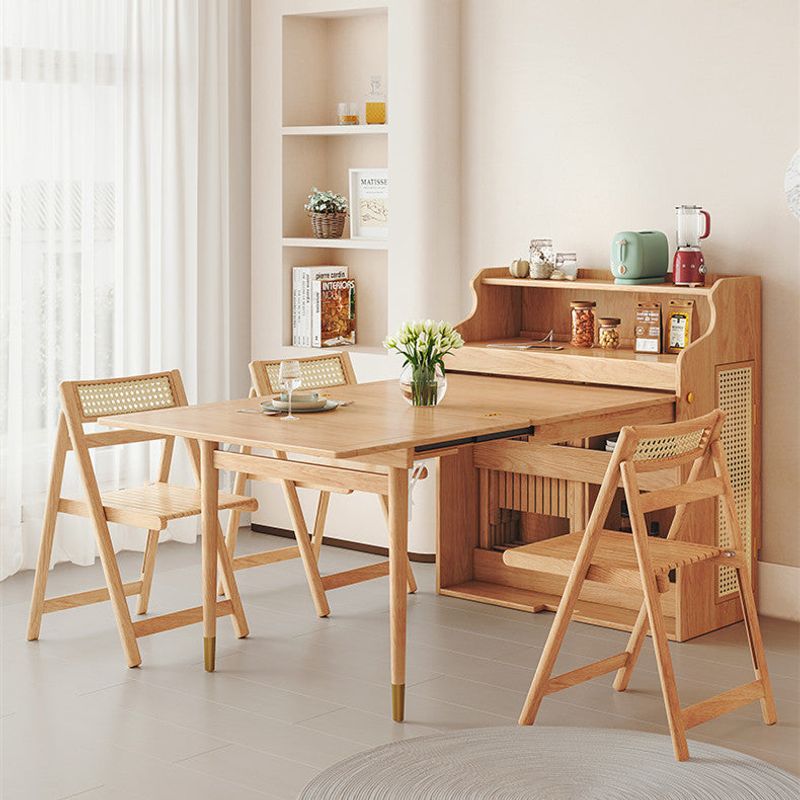
Who says dining rooms are just for eating? The most forward-thinking designs now incorporate workspaces, library nooks, or conversation areas within traditional dining zones. Flexibility reigns supreme!
Smart storage solutions hide away laptops and work materials when dinner guests arrive. Tables with adjustable heights transition seamlessly from workday to mealtime without compromising style.
Families particularly love this trend as it maximizes square footage while accommodating our increasingly hybrid lifestyles where home serves multiple purposes.
6. Handcrafted Ceramic Tableware
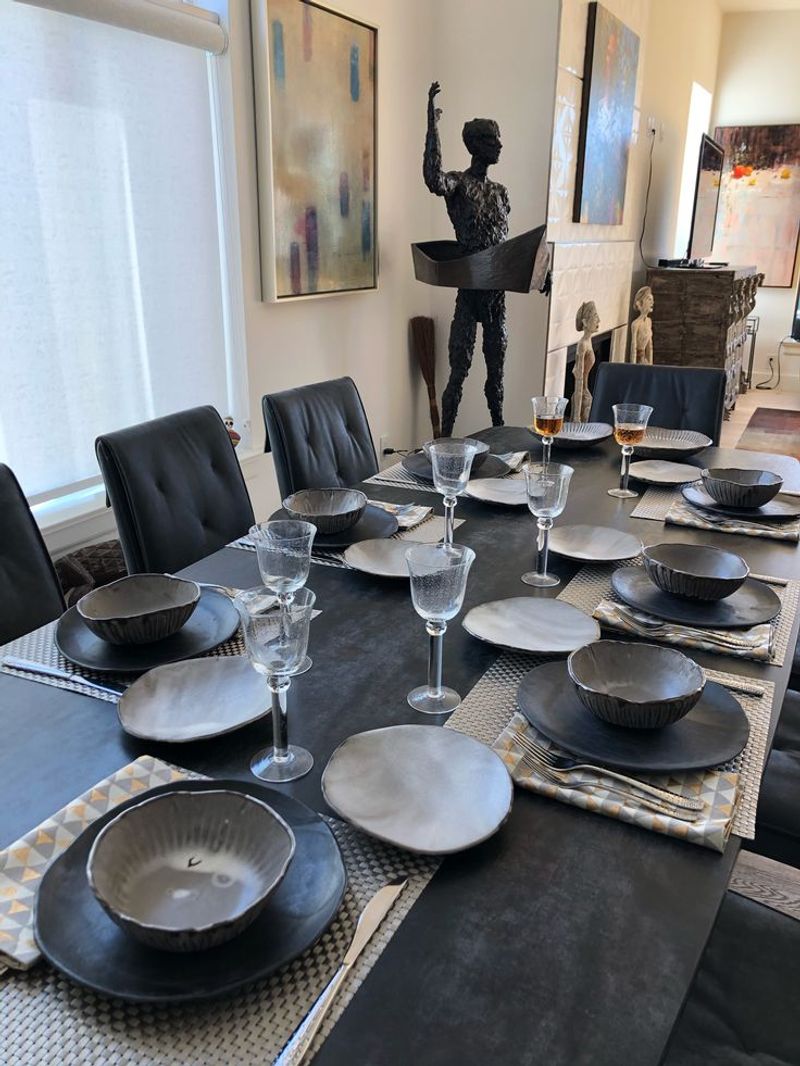
Mass-produced dishes are taking a backseat to artisanal ceramics with character and soul. Perfectly imperfect plates, bowls, and serving pieces in earthy tones or unexpected glazes create unforgettable tablescapes.
Many homeowners are mixing vintage finds with new artisan pieces for eclectic collections that spark conversation. These items often become family heirlooms rather than disposable goods.
Local pottery studios report waiting lists for custom dining sets as people seek connections to the makers behind their everyday objects.
7. Biophilic Design Elements

Plants aren’t just accessories anymore—they’re essential design elements that bring dining rooms to life! Vertical gardens, statement trees, and herb walls are transforming eating spaces into lush retreats.
Beyond potted plants, designers are incorporating natural materials like rattan, bamboo, and stone throughout dining areas. The sounds of small water features add another sensory dimension to mealtime.
Studies show these nature-inspired elements reduce stress and increase feelings of wellbeing, making meals more enjoyable and conversation flow more easily.
8. Conversation-Focused Layouts

Square and rectangular tables are giving way to round and oval alternatives that foster better interaction. Without corners creating distance, everyone feels equally included in the conversation.
Some forward-thinking homeowners are even installing built-in banquette seating that curves slightly, allowing diners to face each other more naturally. Chairs are being selected for comfort first, with meals lasting longer as a result.
Acoustics also play a key role, with sound-absorbing materials strategically placed to enhance the quality of conversation.
9. Heritage Revival Details

Nostalgia is getting a modern update as designers incorporate traditional elements with contemporary twists. Wainscoting, chair rails, and ceiling medallions are making surprising comebacks in otherwise modern spaces.
Rather than strictly following historical patterns, these features are being reimagined in unexpected colors or asymmetrical arrangements. Some homeowners are salvaging architectural elements from historic buildings for truly unique touches.
The charm lies in the juxtaposition—traditional moldings painted in neon hues or antique furniture reupholstered in bold contemporary fabrics.
10. Statement Textiles
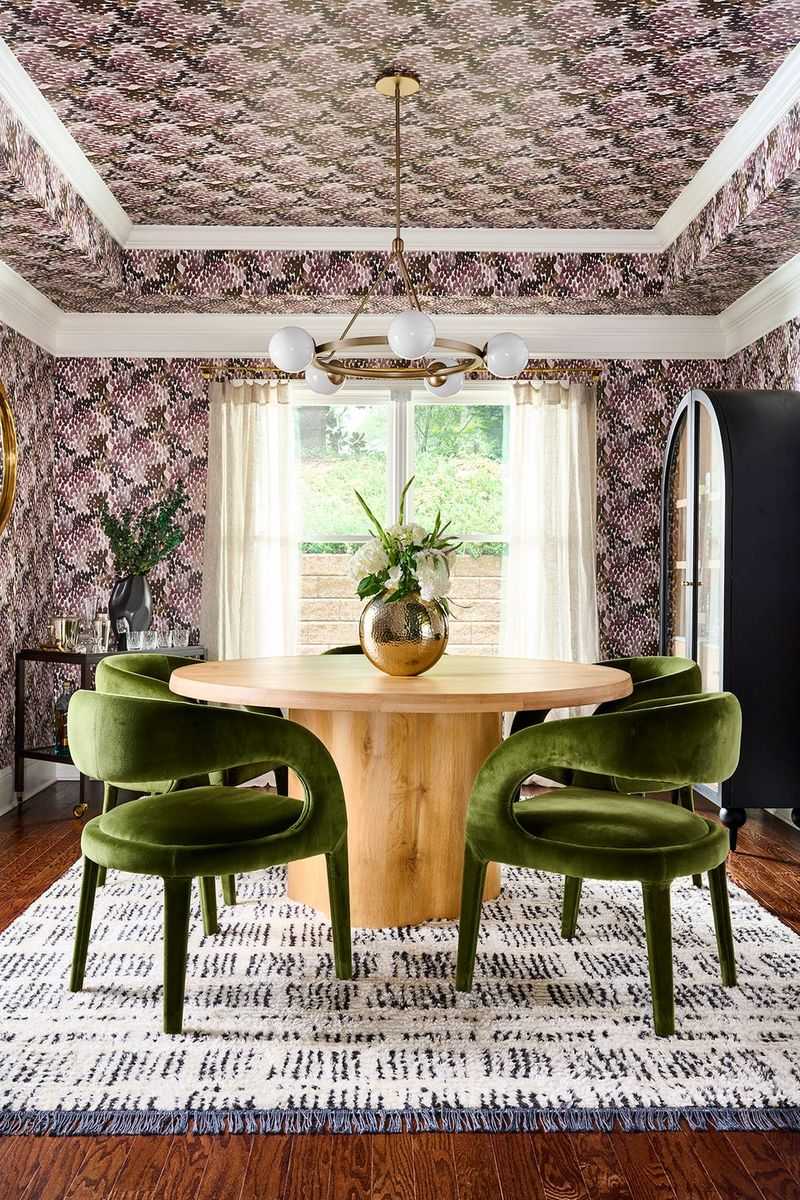
Fabrics are taking center stage with bold patterns, unexpected textures, and artistic prints transforming dining chairs and drapery. Unlike the neutral backgrounds of previous years, textiles now demand attention!
Vintage-inspired velvets, handwoven global fabrics, and even performance materials with surprising textures are being used in combination. Mixing patterns that traditionally wouldn’t go together creates energetic, personalized spaces.
Many designers recommend starting with one showstopping fabric—perhaps on host chairs or window treatments—then building the room’s palette around it.
11. All-White Everything

Once the pinnacle of sophistication, all-white dining rooms are now considered sterile and uninspired by leading designers. These spaces often feel more like laboratories than warm gathering spots for meals and conversation.
Without contrast or visual interest, white-on-white schemes make rooms feel flat and one-dimensional. They’re also impractical for dining areas where spills and stains are inevitable facts of life.
If you love neutrals, designers suggest incorporating at least three different textures and tones to create depth and interest without relying on bold colors.
12. Matching Dining Sets
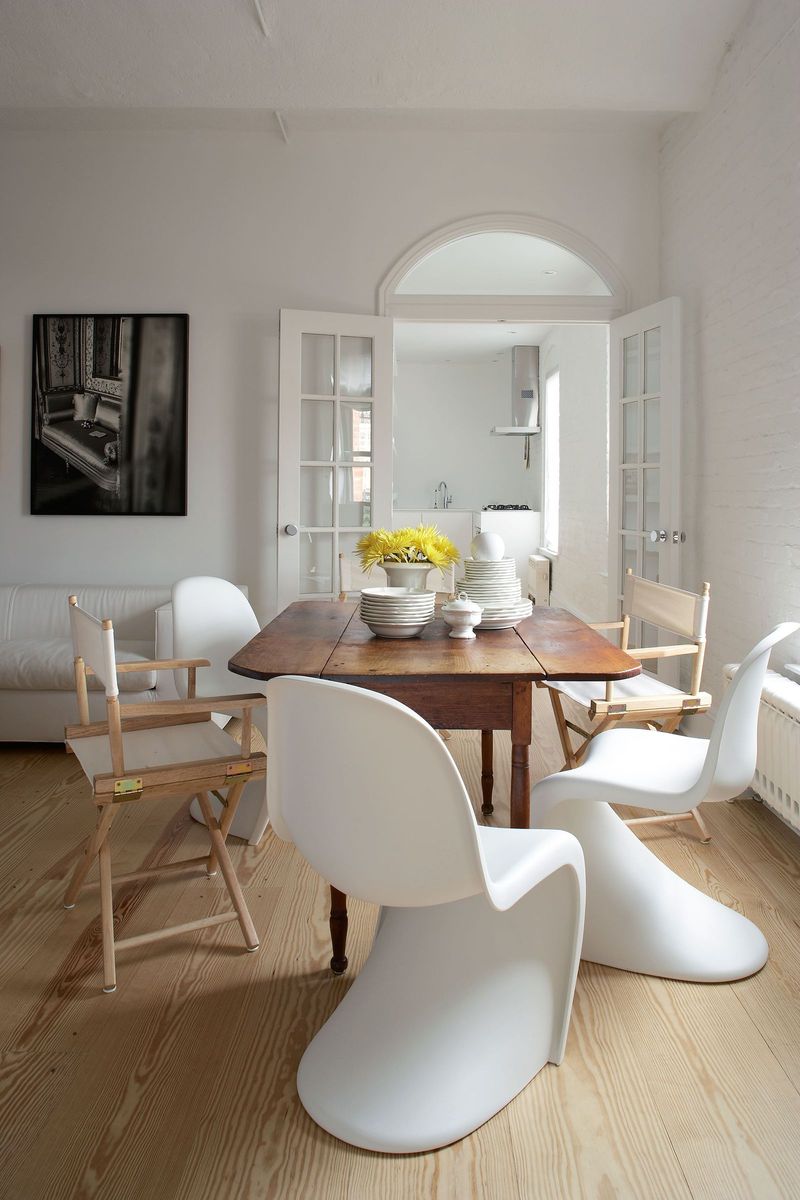
Cookie-cutter dining sets that come as perfect matches are considered design shortcuts that lack personality and creativity. When everything coordinates too perfectly, spaces feel like furniture showrooms rather than lived-in homes.
Designers cringe at the missed opportunity for expression and character. The best dining rooms tell stories through thoughtfully collected pieces that complement each other without being identical twins.
If you already own a matching set, consider painting some chairs differently or replacing just a few with contrasting styles to break up the monotony.
13. Word Art And Inspirational Phrases

“Live, Laugh, Love” and other text-based wall decorations have officially overstayed their welcome in dining spaces. These mass-produced sentiments lack originality and often come across as impersonal fillers rather than meaningful decor.
Instead of generic phrases, designers recommend investing in actual art that speaks to you personally. Even amateur paintings or photography with emotional significance add more character than manufactured motivational quotes.
If text must be incorporated, consider vintage signage with history or custom pieces that reflect something truly unique about your family.
14. Oversized Furniture In Small Spaces

Cramming massive dining tables into modest rooms ranks high on designers’ list of spatial sins. Though the intention might be to accommodate occasional large gatherings, the daily reality is awkward navigation and uncomfortable dining experiences.
Properly scaled furniture allows for breathing room—ideally 36 inches between the table edge and walls or other furniture. Without this clearance, chairs can’t be pulled out properly and serving becomes a gymnastics exercise.
Expandable tables offer the perfect compromise, staying appropriately sized for daily use while adapting for special occasions.
15. Accent Walls

Single accent walls are feeling increasingly dated as designers embrace more cohesive approaches to color. These lonely statements often look like someone ran out of paint or courage halfway through the project.
Modern color application considers the room as a whole, with thoughtful transitions between spaces. If you love a bold color, designers suggest using it throughout the room in varying intensities or complementary tones.
Alternatively, consider using color on architectural features like moldings or built-ins rather than arbitrarily selecting one wall for special treatment.
16. Formal China Cabinets
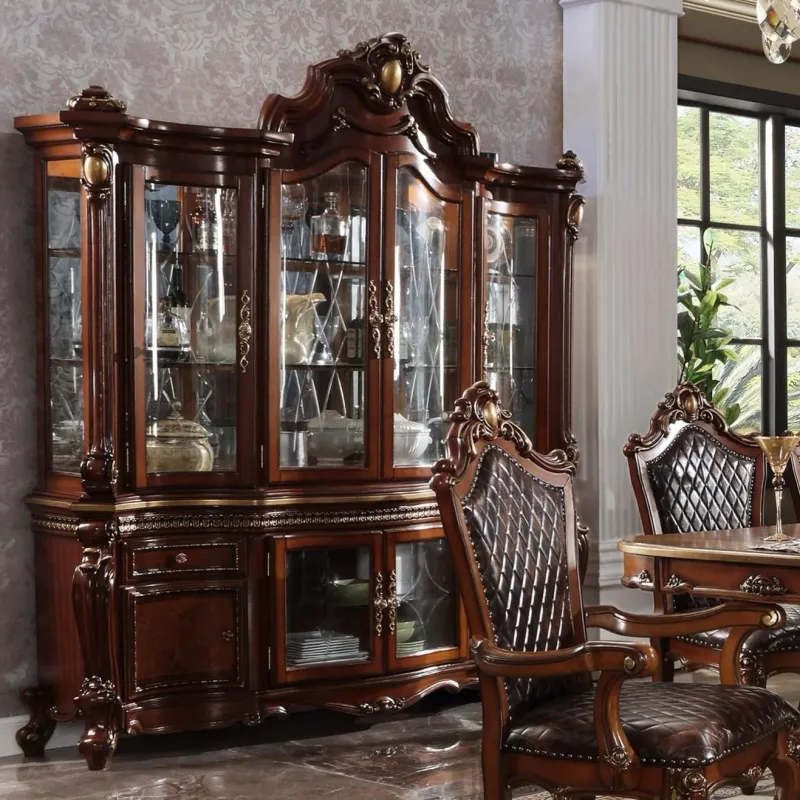
Hulking china cabinets that dominate dining rooms are losing favor as lifestyles become more casual and space-conscious. These massive pieces often become glorified storage for rarely-used items while consuming valuable real estate.
Forward-thinking homeowners are opting for open shelving that displays favorite pieces or smaller, more versatile storage solutions. Many are repurposing heirloom china in everyday settings rather than saving it for special occasions that rarely happen.
If sentiment keeps you attached to grandma’s cabinet, consider repurposing it in another room or painting it to better integrate with contemporary interiors.
17. Theme-Heavy Nautical Decor

Dining rooms drowning in nautical themes have sailed beyond charming into cliché territory. Rooms overwhelmed with anchors, rope details, and compass motifs feel more like themed restaurants than sophisticated homes.
Coastal influences can still work when incorporated subtly through color palette or natural materials. The key is suggestion rather than literal interpretation.
If you love maritime elements, designers recommend choosing just one statement piece—perhaps vintage navigation equipment or authentic marine salvage—rather than an all-out theme park approach.
18. Uncomfortable Show Chairs
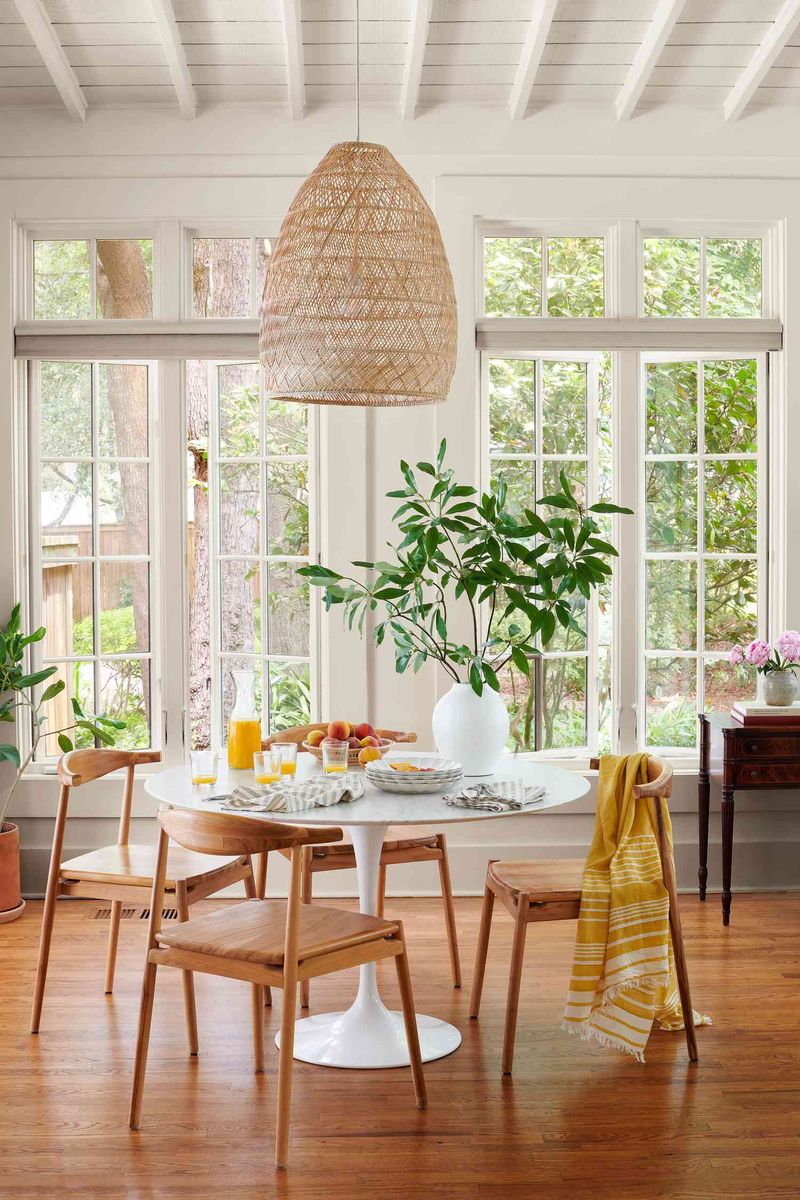
Gorgeous chairs that cause backaches after fifteen minutes are falling out of favor as comfort becomes a priority. Some homeowners have collected dining chairs that look stunning in photos but remain empty during actual meals as guests migrate to cozier seating.
The best new designs marry ergonomics with aesthetics, proving beauty doesn’t require suffering. Proper back support, adequate cushioning, and appropriate height measurements make extended dinner conversations enjoyable rather than endurance tests.
When shopping, always sit in chairs for at least ten minutes before purchasing—no matter how photogenic they appear online!
19. Excessive Table Décor
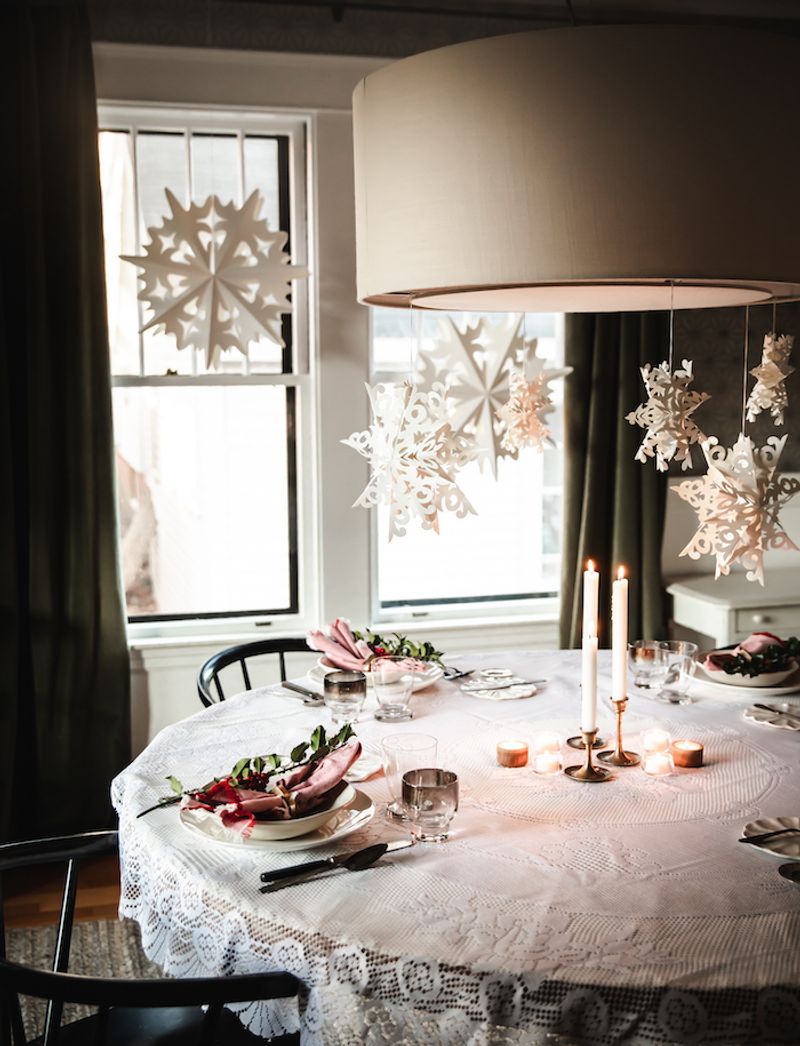
Tablescapes so elaborate they leave no room for plates are on designers’ chopping blocks for 2025. These over-styled setups with multiple candles, figurines, and excessive florals might look great on Instagram but prove impractical for actual dining.
Functional beauty is the new standard, with table décor that enhances rather than hinders the dining experience. Simple, low arrangements allow for eye contact and conversation without obstacle courses of decorative objects.
Quality over quantity applies here—one stunning centerpiece makes more impact than numerous small tchotchkes cluttering the table.
20. Uncomfortable Bar-Height Dining

Tall bar-height dining tables are falling from grace as quickly as diners’ feet dangle uncomfortably beneath them. These elevated eating surfaces create awkward dining experiences, especially for shorter people, children, and elderly guests.
Getting on and off bar stools multiple times during meals proves cumbersome, and the height difference can make serving and clearing difficult. Many homeowners report their expensive bar-height sets sitting unused while family gravitates toward standard-height alternatives.
If you love the casual vibe, counter-height (36″) offers a happy medium between standard dining and uncomfortable bar height.

